Redemption game for the reclamation project against his former team
After failing to register a single shot attempt in his previous two games, Alex Galchenyuk exploded for a three-point night in Game 4 en route to a 4-0 Leafs victory over the Canadiens.
We’ll dive into his individual performance in more detail shortly, but this was definitely The Galchenyuk Game that we’ll be referring back to when we think about this series years from now. The rest of Toronto’s depth also played a key role in securing the victory, keeping the puck 200-feet away from Jack Campbell for large portions of the game.
When the Leafs were forced to defend in their own end, they looked structured as a five-man unit, clogging up the passing lanes and preventing the Canadiens from generating dangerous chances offensively. This was also true on the penalty kill, where Toronto applied pressure at the right moments to strip the Habs of possession and get the puck down the ice.
It’s not often a goaltender puts up a shutout and we can’t remember many of his saves that evening, which speaks to how far this Leafs team has come defensively. They’ve created an environment for Campbell to have success, limiting shot quality to an elite degree in 2021, and as we just saw on Tuesday night, the playoffs have been no exception.
In our attempt to analyze things in a bit more detail, we’ll be breaking down how they accomplished such strong defensive results. I’m also looking forward to taking a deeper dive into the Mitch Marner PP1 extravaganza and Toronto’s successful PK, but before we get too ahead of ourselves, let’s start by acknowledging some of Game 4’s most impactful players.
This should be fun!
Noteworthy Performances
I was wondering if Alex Galchenyuk would have a Playoff Moment against his former team in the playoffs. It wasn’t looking too likely after he struggled to generate much of anything offensively in Games 2 or 3, but to his credit, he was able to break out in Game 4 by making high-skill plays with the puck in transition.
Part of me hates analyzing goals in these postgame reports, since most people have already seen the replay countless times. Then again, when you set up William Nylander for an empty net off a highlight reel pass, I feel obliged to clip it.
Galchenyuk was making these quick little no-look passes to Nylander all evening. Most of them were in the neutral zone, looking off the defender before passing his teammate into open ice. Anytime you can get Nylander into wide open space off the rush, you know it’s going to lead to something dangerous.
The same can be said about Jason Spezza.
Galchenyuk also added an empty netter at the end of the game, although it’s his high-level passing that made him Toronto’s standout player tonight.
His linemate, Alex Kerfoot, also had one heck of a game. If you scroll back up to that Nylander goal, Kerfoot does a great job starting the play by making one of those “connective tissue” passes to keep things in motion. He made a similar play on the power play to get Spezza into open ice on the entry, which gave him plenty of room to find Joe Thornton for the backdoor tap-in.
I shouldn’t have to mention this, but Spezza has been one of Toronto’s best offensive players in 2021. He led the Leafs in 5v5 Points per 60 — the same team with Auston Matthews and Mitch Marner — all while playing most of his minutes with the team’s weakest forwards. It’s pretty remarkable what he’s been able to accomplish on a league-minimum contract, especially when you consider Mike Babcock almost ended his career early in the 2020 season.
Getting back to Kerfoot, I can’t get over how well he’s filled in at the 2C spot. He’s been positionally sound defensively, much more impactful in transition than we saw in the regular season, and offensively, he’s been able to continue passing sequences with his cerebral play. If he’s the best player on his line, you’re in trouble, but if he can get the puck to a high-skill player like Nylander with regularity, then apparently it’s the opponent who’s in trouble.
Goals this series:
Nylander: 4
Montreal: 4— David Amber (@DavidAmber) May 26, 2021
Another trio I wanted to bring up was the Mikheyev-Engvall-Simmonds line. Throughout the regular season, I was highly skeptical of these three playing together on a line, but I’m starting to understand why they’ve been able to consistently yield positive results at 5v5.
Watching them cycle in the offensive zone, all three of them are excellent at winning one-on-one battles; Wayne Simmonds with his strength, Pierre Engvall with his length, Ilya Mikheyev with a bit of both. All three players have a tendency to fire the puck from distance, but they also have a knack for getting themselves to the front of the net and recovering the offensive rebounds.
The end result? A super wide cycle where pucks are constantly being launched at the net with a screen in front, often recovered by one of them in a dangerous area. That’s not a recipe most lines can replicate, but hey, if it works, it works.
Defensively, there were two players I wanted to touch on. Justin Holl did a great job of limiting rush opportunities tonight by closing the gap on Montreal’s forwards at the blueline and getting his stick on the puck. He also made a couple of great plays in his own end, breaking up plays in front of the net and along the boards, again, with a well-timed stick-check.
The other defender of note was Travis Dermott, who was filling in for Rasmus Sandin on the third pair. Neither player really deserved to come out of the lineup, but I can understand why Sheldon Keefe made the decision after watching Dermott prevent the Canadiens from generating rush chances.
The Canadiens’ only consistent way of creating offense in this series has been off the rush, which is why having a neutral zone specialist like Dermott makes a lot of sense at 5v5. He wasn’t anything special, but he gapped up in transition, didn’t get beat behind for odd-man rushes, and made his usual quick passes out of the corner to start the breakout.
Adam Brooks was the other new Leaf in the lineup, and frankly, I’m not sure if he earned his keep for Game 5. If Nick Foligno is healthy, I’d imagine he draws into the lineup. This isn’t to say Brooks played poorly, although he was losing a few battles along the boards while failing to complete the dangerous passes we saw him making a few weeks ago. That might help explain why Toronto’s fourth line got shelled at 5v5 tonight.
Finally, we should probably say something about Jack Campbell. He did register a shutout after all. What’s funny is I can’t recall a standout moment from him tonight, which isn’t his fault. It’s just a testament to how well the team in front of him did at limiting high-quality chances.
The one aspect of his play that did stand out was his rebound control. Toronto’s team defense did a great job of keeping things to the outside and giving Campbell a clear sight of the shots coming at him from distance. This allowed him to stop the first shot and hold onto it for a whistle, resulting in a lot of “one and done” chances for Montreal.
Just ask Joel Armia.
They held Armia back for this lol pic.twitter.com/eTreHary03
— Omar (@TicTacTOmar) May 26, 2021
Poor guy. It isn’t his fault Marc Bergevin has failed to acquire players who can make high-skill plays off the wall in the offensive zone.
Toronto’s Cycle Dominance
The following stat really sums up how this series has been going.
A follow-up on this, three games into the series…
Rush Chances = 17-15 MTL
Cycle Chances = 37-11 TOR 😲The difference creating offence in-zone is almost comical. Toronto = very good. Montreal throws everything at the net. Hot potato. Won't be surprised if TOR wins in 5. https://t.co/9mbpS3dOM1
— Mike Kelly (@MikeKellyNHL) May 25, 2021
It was more of the same in Game 4. Off the rush, Montreal is actually a really good team at counter-attacking with their speed. Brendan Gallagher had a few moments tonight where he looked like he was going to break through.
Unfortunately for Habs fans, the team hasn’t been able to accomplish much after the initial shot. If they fail to generate a rush chance, the puck tends to find itself on the perimeter, with very little hope of ever getting to the danger areas by way of a skilled play through the middle of the ice.
As Mike Kelly put it, they’re essentially playing “hot potato” along the boards and from the point. The only types of passes you tend to see are of the low-to-high variety, followed by a long distance prayer from the blueline. Shockingly, this doesn’t lead to efficient offense.
Sometimes they’re not even able to get the point shot off, leading to a bizarre game of dump and chase they essentially play with themselves — and eventually lose.
I think my favourite hallmark play of this era of Canadiens hockey is when they dump the puck in, recover it at the point, then rim the puck around the boards, barely recover it with no time to make a play, then rim it around the boards again to lose it. The Triple Dump Flush.
— Andrew Berkshire (@AndrewBerkshire) May 26, 2021
When your best-case scenario is a 60-foot shot from your right-side defenseman, you’re probably not going to score a lot of goals.
Now, this becomes even harder when the team you’re playing against commits to structured defending in their own end. The Leafs have done an excellent job of taking away the high-value plays in the dangerous areas of the ice while applying pressure to puck-carriers in vulnerable positions.
When a team like Montreal doesn’t have the star power to break down defenders in 1-on-1 situations — with the exception of Cole Caufield and maybe Nick Suzuki on a good night — it’s just so tough to break down a well-structured unit. The fact that we can say Toronto fits that description is a testament to how much they’ve improved on that side of the puck.
Mitch Marner on the Power Play
Right from Toronto’s first faceoff with the man advantage, it was clear the Leafs wanted to get Marner back on his strong side to run things from the right wall. This got me thinking: what is the best way to take advantage of Marner’s skillset?
There’s been a lot of discourse on the $11 million winger lately, particularly when it comes to his role on a PP1 unit. “He isn’t a shot threat from the left wall…he can’t play bumper…he isn’t willing to play net front apparently…then where the hell should he play?”
Questions like these keep me up at night because a) I’m a loser and b) it really matters with respect to Toronto’s Stanley Cup aspirations. Then I saw him pull off the following high-tip play and it got me thinking back to the Jim Hiller era.
We used to see Marner make this pass to Nazem Kadri all the time back in the day. It was the counter to the JVR pass down low, forcing opposing PKs to pick their poison as to which high-value pass they would take away.
Those units were incredibly successful. In fact, if we look at Expected Goals per 60 at 5v4 since we started tracking this stuff back in 2007, the Marner-centric units were actually the most successful in modern NHL history.
Here are Top 10 in the “Analytics Era” (2007 to Present)
- Toronto’s Marner unit (2017-18)
- Toronto’s Marner unit (2018-19)
- San Jose’s Thornton unit (2014-15)
- San Jose’s Thornton unit (2010-11)
- Carolina’s Svechnikov unit (2019-20)
- Colorado’s MacKinnon unit (2020-21)
- Vegas’ Marchessault unit (2017-18)
- New York’s Panarin unit (2020-21)
- Philadelphia’s Giroux unit (2014-15)
- Washington’s Ovechkin unit (2009-10)
Data from Evolving-Hockey.com
As much as I want to criticize Marner for being too predictable, not enough of a shot threat, and possibly even a liability on PP1 this season, we have objective evidence that shows he can run the most successful power play of the last decade and a half.
Things might not be working out right now, but if the Leafs revert back to some of the tactics that worked under Hiller, I wouldn’t be shocked if Marner started reminding fans why he ranks second only to Connor McDavid in 5v4 Assists per 60 since entering the NHL.
Why has Toronto’s PK been so effective?
Whenever the Canadiens get a power play, keep your eye on #22. That’s Cole Caufield, Montreal’s most dangerous shot threat by a mile among forwards. In Game 4, they had him set up on the left dot every single time, save for one instance later in the game where they tried to shake things up.
I really liked the way Toronto chose to defend him in-zone. The defenseman on his side of the ice would take away the shooting lane, while the forwards would close in on him whenever he got the puck on the left side of the ice.
This is right in line with Toronto’s PK philosophy, waiting until it’s the right time to pressure, then swarming the puck-carrier to force a turnover.
Leafs call the coordinated pressure Simpson was talking about “4 go.” Once 1 player leaves the PK structure to pursue a loose/bobbled pucks everyone is triggered to jump/go at next guy. Pressured guy should have no easy options. Patient in structure until then, green light after
— Justin Bourne (@jtbourne) May 26, 2021
Usually penalty killers will wait for a bobbled puck or the opposing player to be on their backhand until they attack them — we call these “pressure points” — but Toronto’s strategy to immediately pressure Caufield on the left side of the ice is actually pretty clever.
If you’re Caufield and you get the puck here, ask yourself what the best passing option is.
There are five right-handed shots on the ice. That means when you get it on the left flank, you have zero one-timers available to you.
Tyler Dellow was the first one to make me think of this concept when he broke down the Oilers’ five left-handed shots on their power play back in 2018. With no immediate shot threats available to Caufield, the Leafs’ penalty killers have the freedom to attack him right away without fear of consequences.
At best, he can maybe make the pass down low or reset it back up top. Realistically, though, the most likely outcome is he’s going to get swarmed and turn the puck over, which is exactly what happened in the clip we showed above.
What about the other unit?
I’m glad you asked. This is the most “dangerous” look they were able to create in-zone.
That’s Jesperi Kotkaniemi on his strong side. As long as the Leafs take away that pass through the middle of the ice, there aren’t too many threatening options for Montreal here.
Toronto seems more than content to allow Montreal’s shooters to fire wristers from their strong side, whether it’s Kotkaniemi on the left side of this formation or Suzuki on the right side of the other unit. Those are typically low-percentage shots, especially from players who don’t have a long track record of beating NHL goaltenders from distance.
Watching the Habs closely over the last few games, it makes sense that their most dangerous chances on the power play come off the rush. If they can catch you off guard with their speed, they can get the puck to a dangerous spot. When they’re going up against a set defense, though, they really struggle to generate high-quality looks, often relying on point shots from their defenseman or those strong-side wrist shots that opposing penalty killers are begging them to take.
When you combine that with Toronto’s disruptive forwards on the PK, it’s a recipe for failure in Montreal, which has been the case outside of a few Caufield moments of brilliance. I’d expect that to be the case moving forward.
“The Analytics Line”
After inexplicably taking Tomas Tatar off of the top line — and almost out of the lineup in Game 3 — Dominique Ducharme reunited the top line that’s had so much success at 5v5 over the last few seasons.
People make fun of me when I try to argue that they’re the best line in hockey, but they’ve consistently dominated their minutes at even strength against the toughest competition in the NHL. Here’s a look at the top lines this season at controlling quality chances — or expected goals — courtesy of our good friends at MoneyPuck.com.
That meets the sniff-test for me. You could argue the scoring talent of a Matthews-Marner, MacKinnon-Rantanen, or Marchand-Pastrnak are enough to elevate them above Tatar-Danault-Gallagher, but there’s something about a line controlling 70 percent of play that’s staggering to me. No other trio has accomplished that in the past 14 years we’ve been publicly tracking shot locations. If goals are more your thing, they outscored opponents 18-3 this year at even strength, good for an 86 percent goal share, also ranking first in the NHL.
We know that line-matching has a much bigger impact in smaller samples, which is why I like paying such close attention to it in playoff matchups. In Game 4, The Analytics Line actually dominated Matthews & Co. They out-chanced Matthews’ line 9-4 at even strength, and if you look at their matchup against Morgan Rielly, the scoring chances were 7-0 Montreal in those minutes.
If the Canadiens have any hope of climbing back in this series, it’s likely going to come from their puck-dominant trio at 5v5. They may not have the scoring prowess to keep up with Toronto’s top-tier talent, but if the Tatar-Danault-Gallagher line can territorially control the run of play against Matthews and Rielly, all it takes is a few bounces from their bottom nine and they could extend the series.
Breaking down the numbers
One of the most interesting stats in this series is just how mismatched the teams have been in the second period. Here’s a graphic I pulled from the broadcast.
With the long change in the second period, there’s more of an opportunity for teams to bury their opponents with long shifts on the cycle. It’s harder for opponents to get a line change, leading to more extended zone time for the team with puck possession, which often results in the defending team taking a penalty due to fatigue.
The Leafs have really capitalized on those opportunities, which is clear when you look at the data.
If the sign of a good team is dominance in the middle frame with the long change, the Leafs have carried 65% of the shot attempts and outscored Montreal 7-1 in those 80 second-period minutes.
— Alec Brownscombe (@MapleLeafsHS) May 26, 2021
My editor, Alec Brownscombe, wanted me to let you know that the goals have actually been 8-1 in Toronto’s favour throughout the second period in this series. That’s complete dominance and helps explain why they’ve taken such a stranglehold on the series.
Before we get out of here, I’d be remiss if I didn’t share the individual and on-ice metrics for each Maple Leaf, as is tradition.
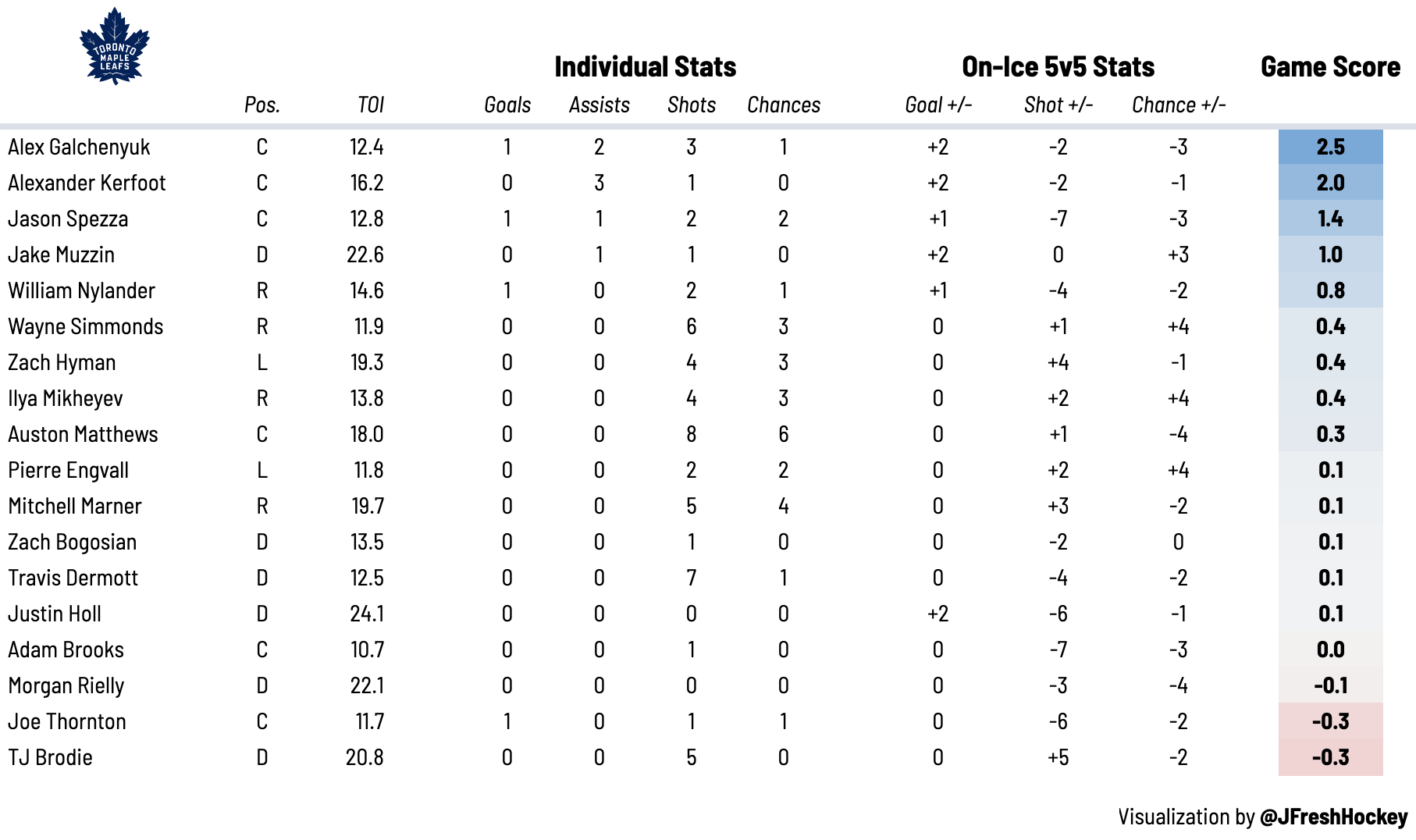 There’s no point in telling you things you already know, but it’s always nice when the numbers line up with the eye test. Galchenyuk was dominant, the Mikheyev-Engvall-Simmonds line controlled play, and Rielly lost the territorial battle against The Analytics Line.
There’s no point in telling you things you already know, but it’s always nice when the numbers line up with the eye test. Galchenyuk was dominant, the Mikheyev-Engvall-Simmonds line controlled play, and Rielly lost the territorial battle against The Analytics Line.
Oh yeah, that Matthews guy generated a lot of scoring chances. Something tells me he’ll keep doing that.





















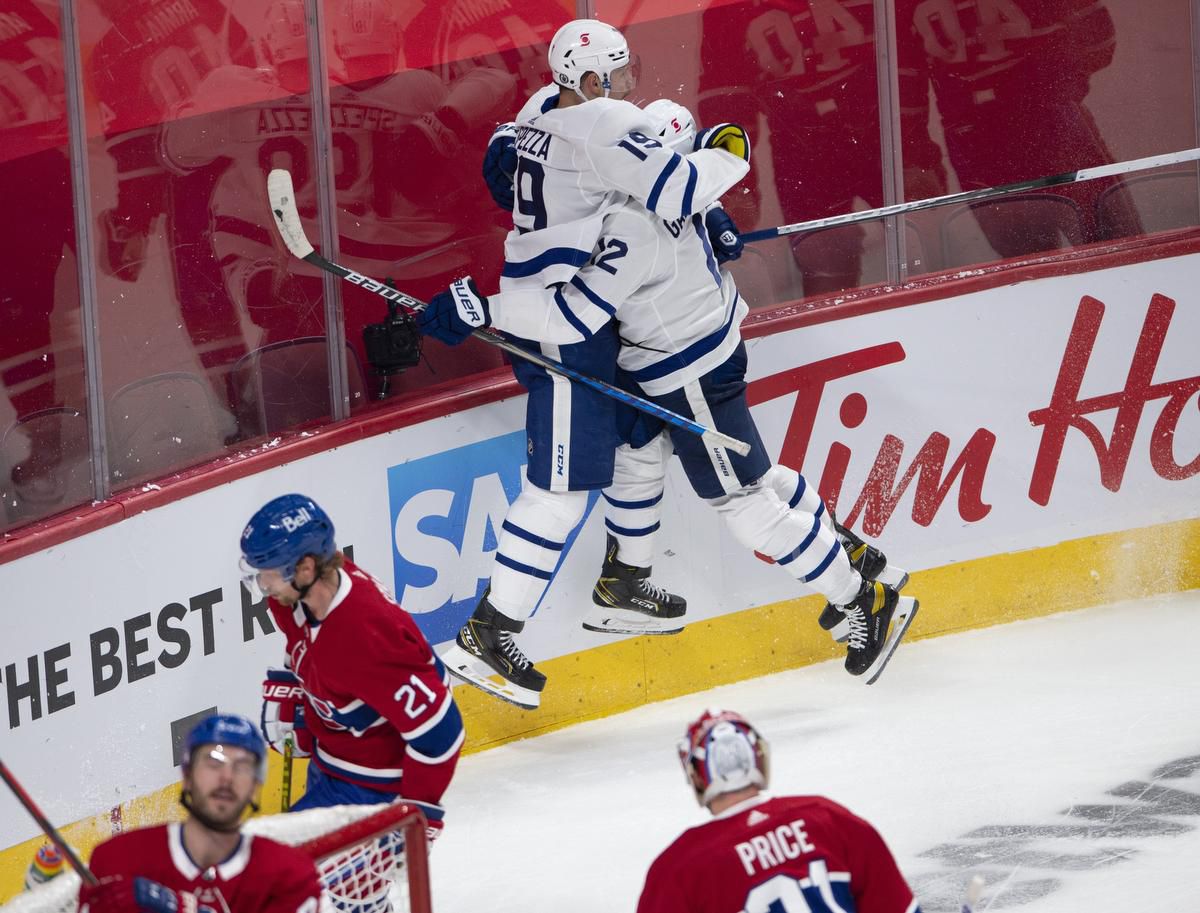
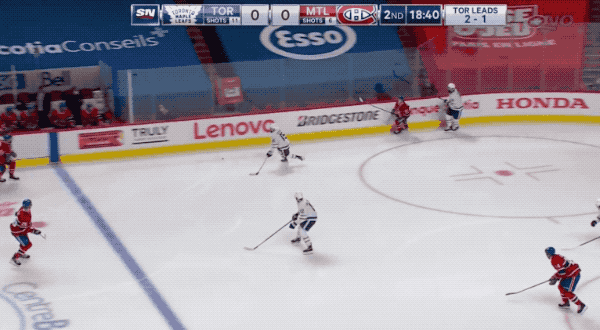

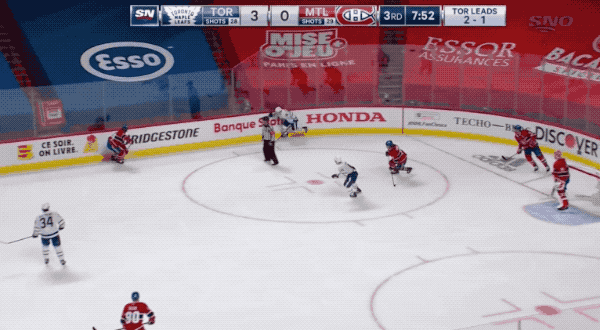
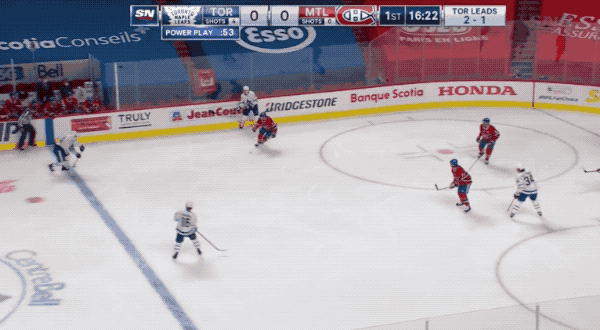
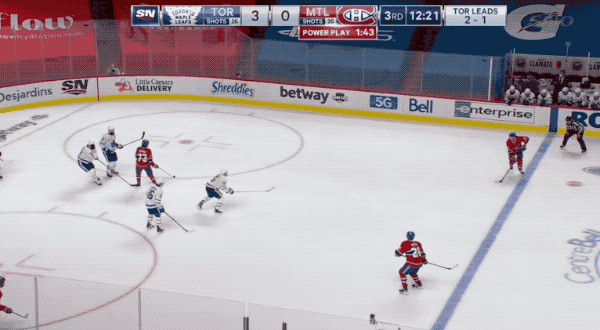
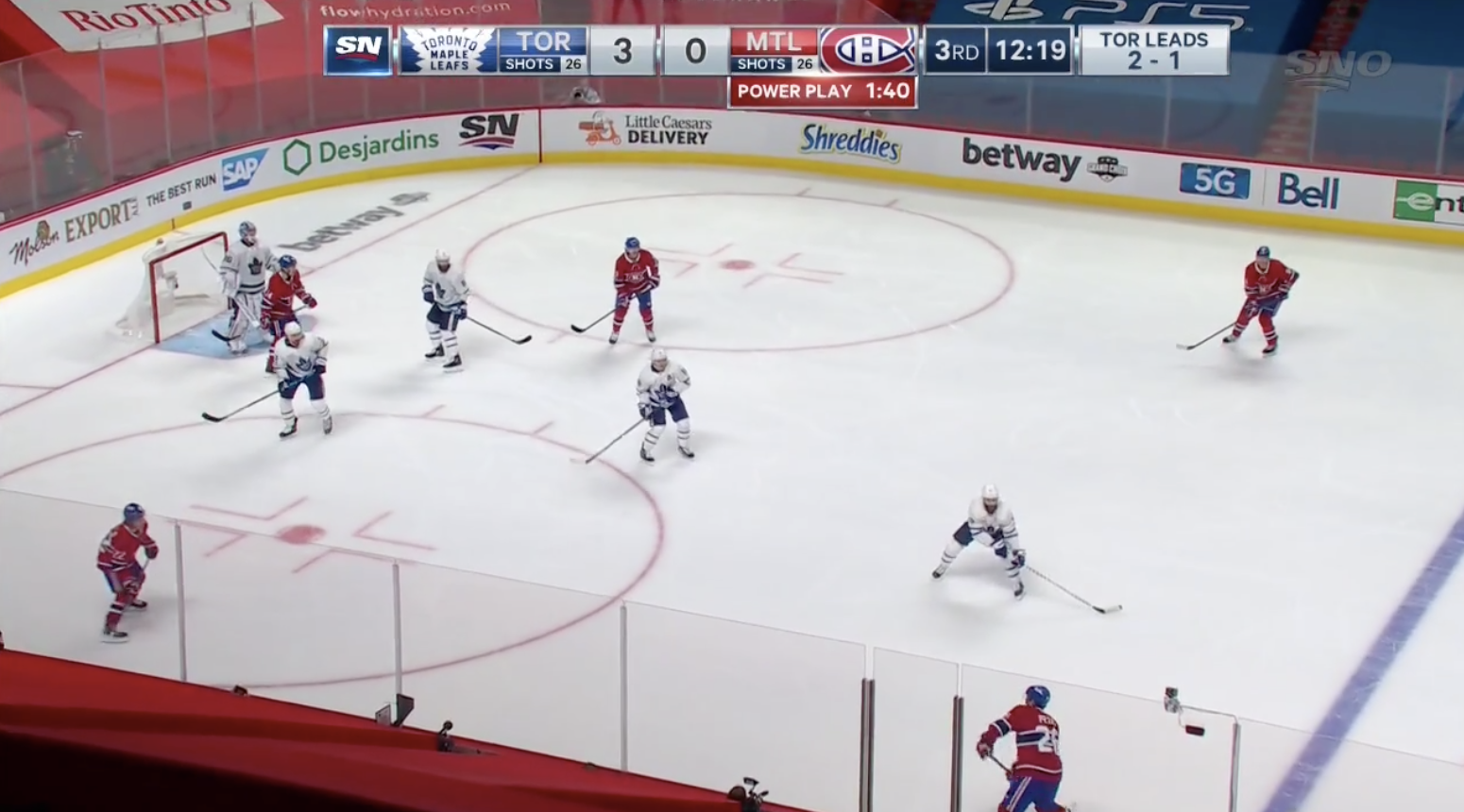
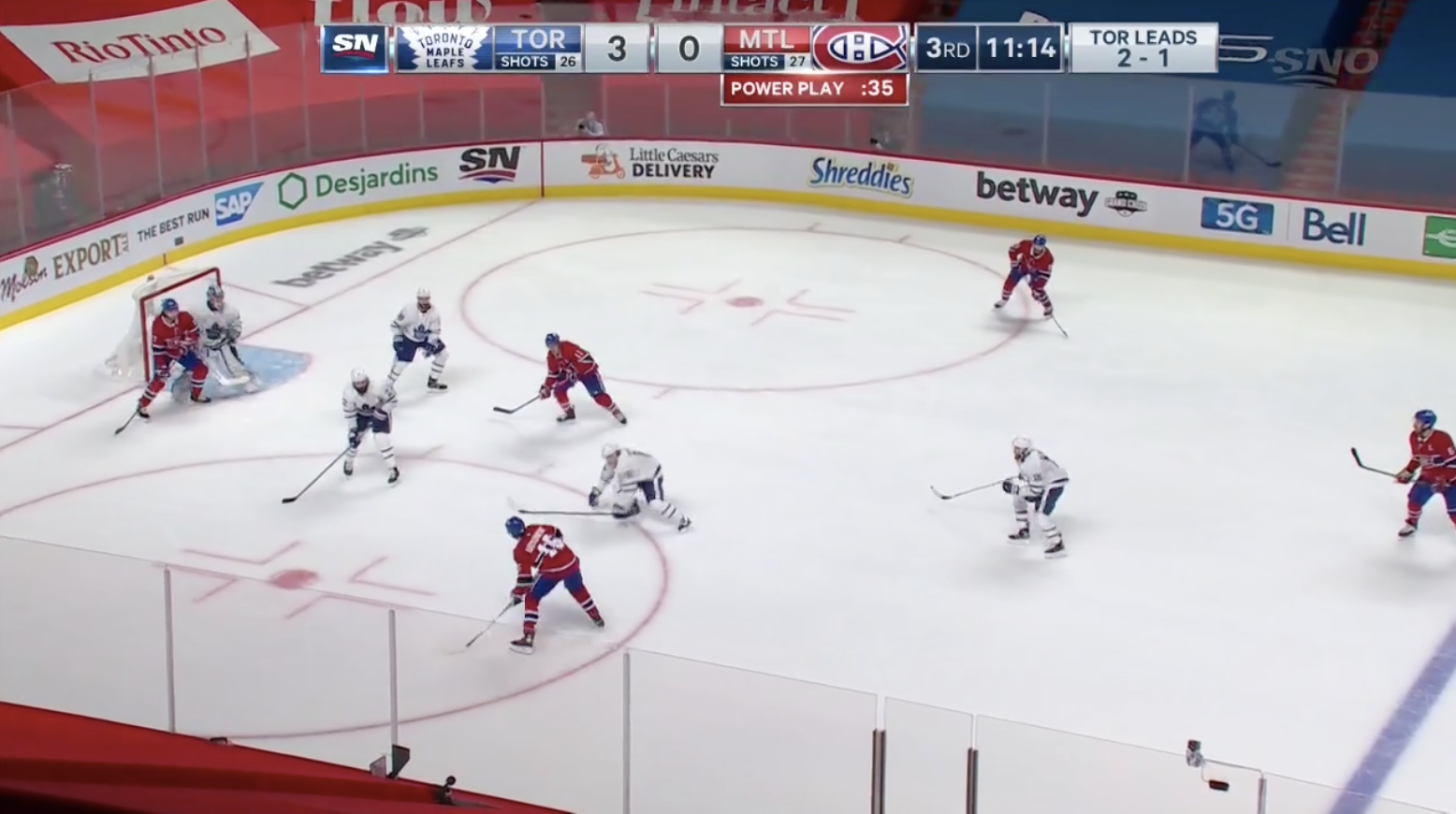










![New Leaf Anthony Stolarz on the opportunity in Toronto: “In Florida, I knew my role as a backup… Now, [Joseph Woll] and I are competing for starts… As a goalie, that’s all you can ask for” Anthony Stolarz, Stanley Cup win, now Maple Leaf](https://mapleleafshotstove.com/wp-content/uploads/2024/07/anthony-stolarz-sc-100x70.jpg)
